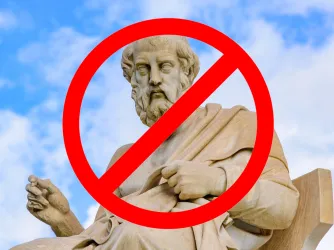Table of Contents
What happens when America's future leaders reject the liberty on which it was founded?

Shutterstock.com
This op-ed originally appeared in the Washington Examiner on Sept. 26, 2023.
This month, America celebrates the 236th birthday of the Constitution , which sits alongside the Declaration of Independence and the Bill of Rights as one of America’s “Charters of Freedom.”
On such an occasion, it’s worth asking: What happens to a nation founded on the idea of liberty when its citizens don’t know what that liberty entails — or, worse yet, reject it?
The Supreme Court wrote in 1937 that freedom of expression is “the matrix, the indispensable condition of nearly every other form of freedom.” It’s fitting then that the First Amendment sits atop the Bill of Rights, enshrining the right to five different freedoms: free speech, press, religion, assembly, and petition.
But a survey conducted this year by the Foundation for Individual Rights and Expression found that almost one-third of respondents could not name a single right protected by the First Amendment. Forty percent could name one — usually freedom of speech. Only 3% could name all five.
As we celebrate the 236th birthday of the Constitution, we should take this opportunity to redouble our efforts to educate the public about the ideas that are enshrined in the Constitution — before we suffer from collective amnesia and those ideas are lost.
What’s worse, many people outright reject what they do know of the First Amendment. For example, the First Amendment protects most false speech. But the Pew Research Center recently found that 55% think the government should restrict it online, “even if it limits freedom of information” — that’s up from 39% in 2018.
Notably, those with the least respect for America’s guaranteed freedoms happen to live on college campuses. Even though almost half of college students know that hate speech is generally protected by the First Amendment , 31% of them think it should not be protected.
Earlier this year, we also saw a slew of incidents on college campuses that demonstrated students’ lack of knowledge, if not their outright abandonment, of free speech principles.
At the State University of New York at Albany, hecklers took over and shouted down a planned speech by conservative commentator Ian Haworth. As they occupied the stage, one heckler shouted , “This is what free speech looks like.”
But using mob tactics to censor and silence is not what free speech looks like. It is the antithesis of it. Haworth's topic that day was supposed to address free speech on campus. The students could have used the lesson.
Similarly, in March, law students at Stanford University used mob tactics to try to shut down a federal judge’s on-campus speech. After the administration apologized , the students tried to portray their actions as an example of more speech: “‘Counter-speech’ is free speech,” read their flyers. “We have free speech rights too.”

The new Red Scare taking over America's college campuses
It is most commonly estimated that around 100 college professors were fired for real or imagined communist sympathies during the Red Scare. But what if I told you it's worse today, much worse, across multiple important metrics?
If that’s what America’s future lawyers think free speech entails (or should entail), they turn the founders’ idea of liberty on its head.
When FIRE recently polled Stanford’s broader student body about the incident, 64% said they felt the administration’s apology was a mistake. An identical percentage said a speaker such as Duncan, who argues that there is no constitutional right to same-sex marriage, should not be allowed on campus.
Sadly, support for mob censorship tactics is growing among college students nationwide. Forty-five percent said blocking other students from attending a speech may be acceptable in some situations. A whopping 27% said the same about using violence to stop a campus speech. That’s up from 37% and 20%, respectively, in the previous year.
It’s cliche to say that students are America’s future. But it’s true. If they enter society with illiberal (and, frankly, scary) attitudes about free speech, we may well learn what happens when a nation founded on liberty rejects liberty.
Alan Charles Kors, a co-founder of FIRE, has noted that “a nation that does not educate in liberty will not long preserve it and will not even know when it is lost.”
As we celebrate the 236th birthday of the Constitution, we should take this opportunity to redouble our efforts to educate the public about the ideas that are enshrined in the Constitution — before we suffer from collective amnesia and those ideas are lost.
Nico Perrino is the executive vice president of the Foundation for Individual Rights and Expression. He is also the host of So to Speak: The Free Speech Podcast and the co-director and senior producer of the free speech documentary Mighty Ira.
Recent Articles
Get the latest free speech news and analysis from FIRE.

Can the Pentagon strip Mark Kelly’s rank over speech?

Texas A&M to philosophy professor: Nix Plato or be reassigned

Morgan State says cut the cameras, stop the presses


